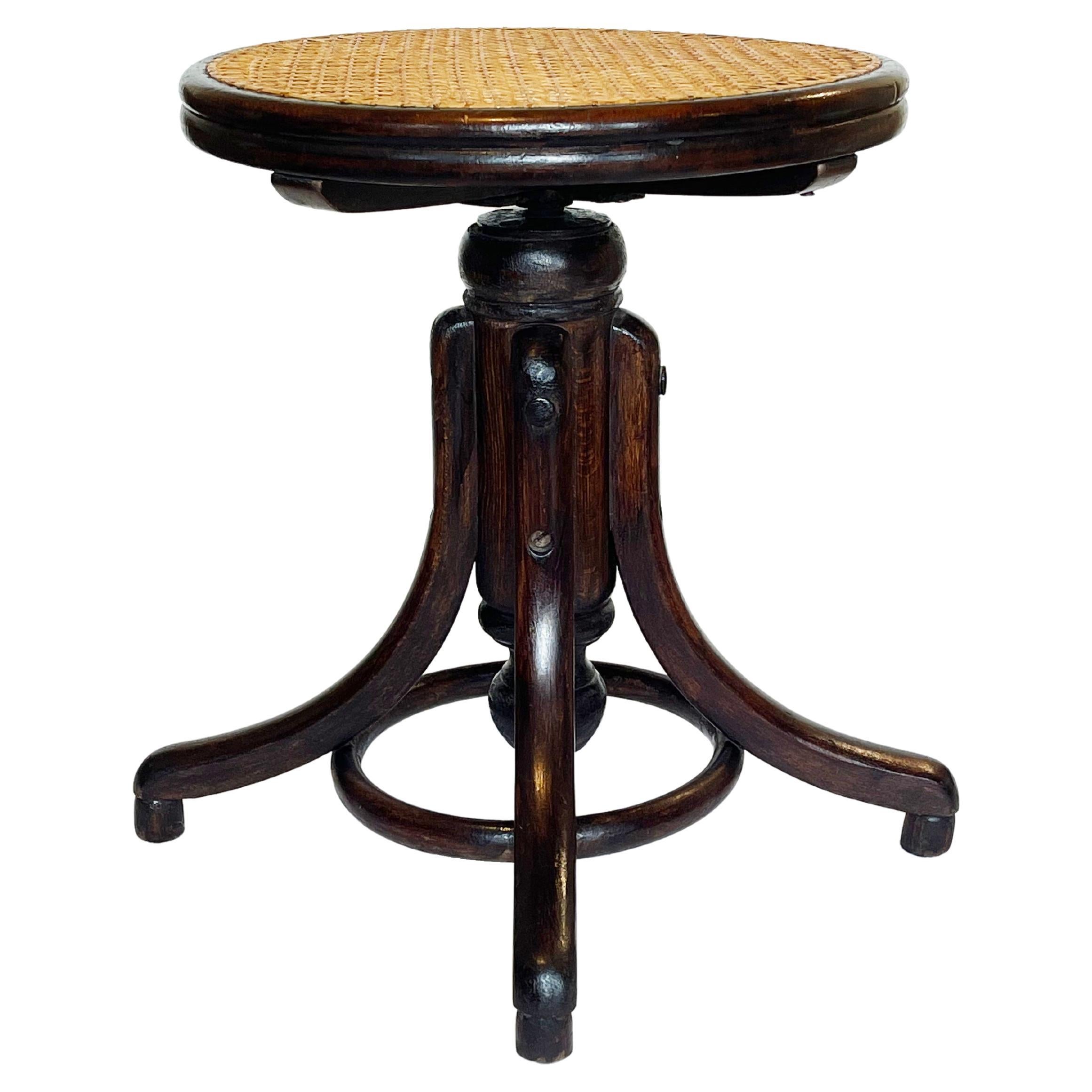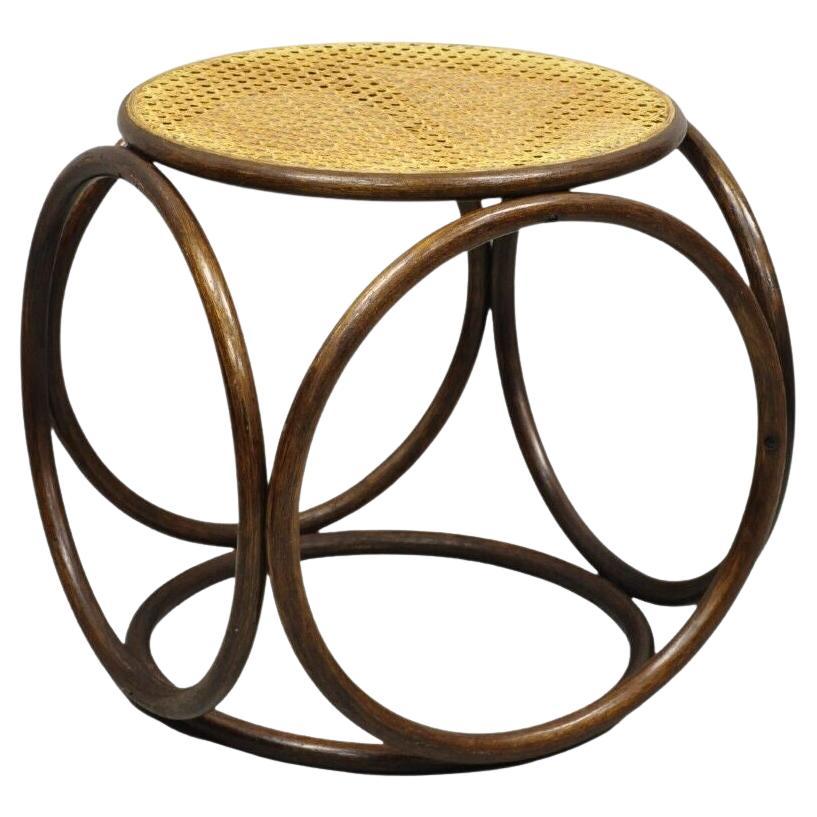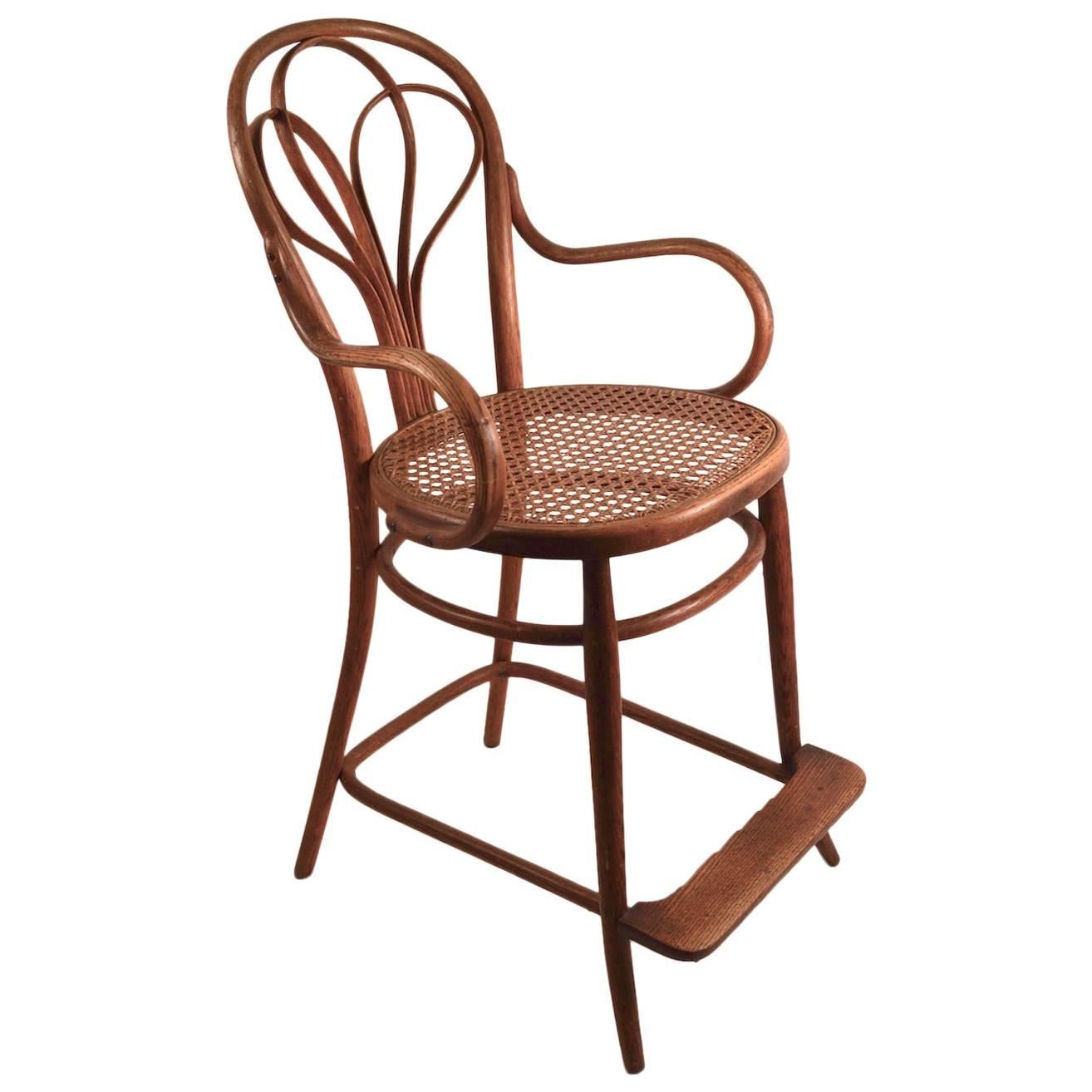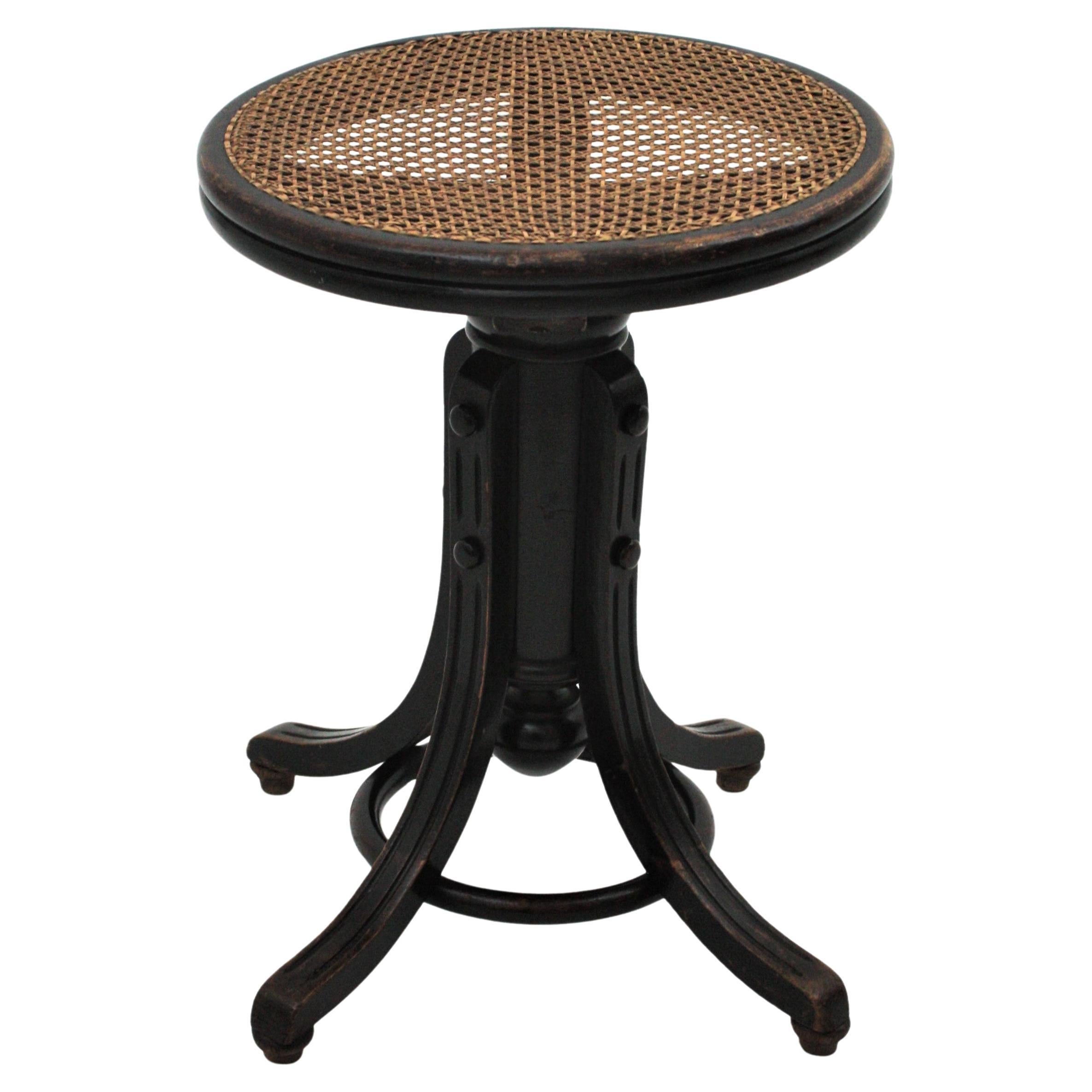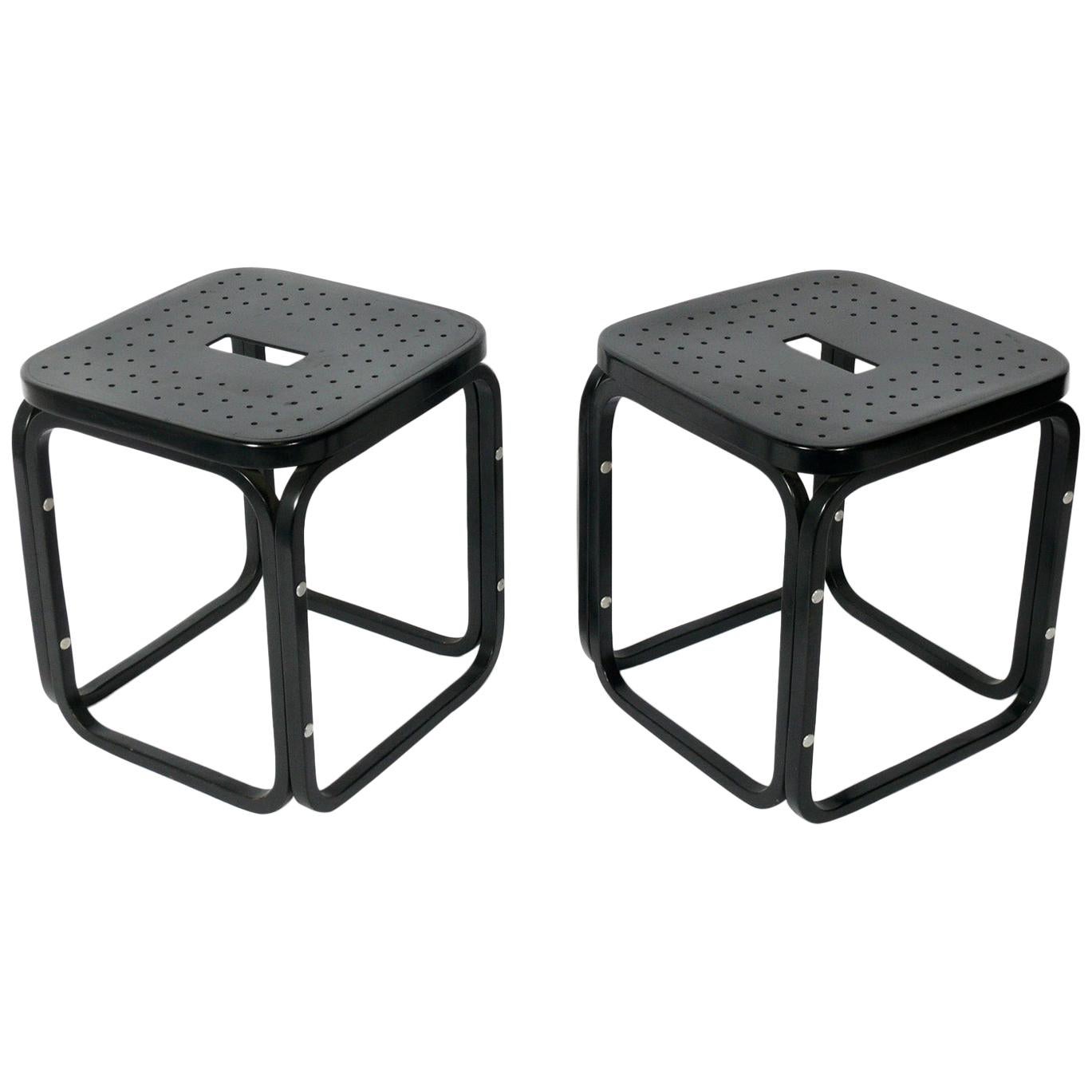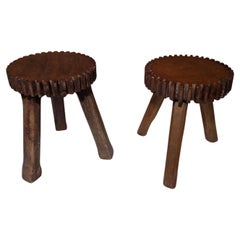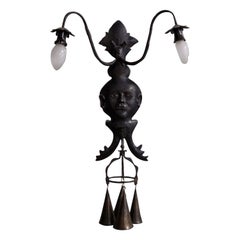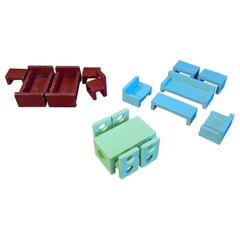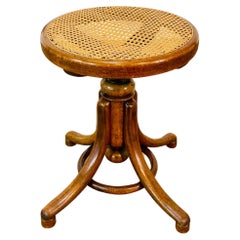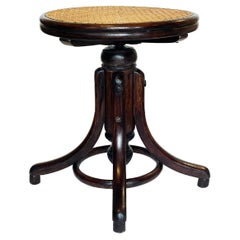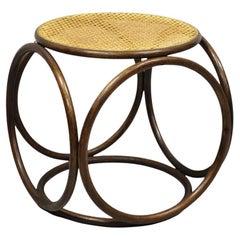Low bentwood stool with cane seat by Thonet, Austria 1920s
About the Item
- Creator:Gebrüder Thonet Vienna GmbH (Manufacturer)
- Dimensions:Height: 17.72 in (45 cm)Diameter: 13.78 in (35 cm)Seat Height: 17.72 in (45 cm)
- Style:Vienna Secession (In the Style Of)
- Materials and Techniques:
- Place of Origin:
- Period:
- Date of Manufacture:1950-1960
- Condition:Wear consistent with age and use. Minor fading.
- Seller Location:ECHT, NL
- Reference Number:1stDibs: LU9426237172642
Gebrüder Thonet Vienna GmbH
For more than 180 years, Thonet — or Gebrüder Thonet — has produced elegant and durable tables and cabinets as well as chairs, stools and other seating that wholly blur the lines between art and design. Widely known as a trailblazer in the use of bentwood in furniture, the European manufacturer has reimagined the places in which we gather.
Noted for his skill in parquetry, German-Austrian company founder Michael Thonet received an invitation from Austrian Chancellor Prince Metternich to contribute Neo-Rococo interiors to the Liechtenstein City Palace in Vienna. The Boppard-born Thonet had honed his carpentry skills in his father’s workshop, where he carried out experiments with plywood and modified the Biedermeier chairs that populated the studio.
Thonet’s work for the chancellor raised his profile, and the cabinetmaker gained international recognition, including at London’s Great Exhibition of 1851, which featured works created by members of the Arts and Crafts movement as well as industrial products of the day. Thonet showed a range of furniture at the fair and won the bronze medal for his bentwood chairs. He incorporated his family’s company, the Thonet Brothers, with his sons in 1853.
Bentwood furniture dates as far back as the Middle Ages, but it is the 19th-century cabinetmaker Thonet who is most often associated with this now-classic technique. Thonet in 1856 patented a method for bending solid wood through the use of steam, and from there, the bentwood look skyrocketed to furniture fame. The works of renowned mid-century modern designers such as Alvar Aalto, Arne Jacobsen, and Charles and Ray Eames that put this technological advancement to use would not be as extensive or celebrated were it not for the efforts of the pioneering Thonet.
Considered the world’s oldest mass-produced chair, Michael Thonet’s ubiquitous Chair No. 14 demonstrated that his patented bentwood technology made it possible to efficiently produce furniture on an industrial scale. Now known as the 214, it won the German Sustainability Award Design for 2021, a recognition of the company’s commitment to environmentally responsible production.
Often called the Coffee House chair — the company’s first substantial order was for a Viennese coffeehouse — the No. 14 remains an icon. Thonet originally designed the chair in 1859, and it is considered the starting point for modern furniture.
The bentwood process opened doors — there were investments in machinery and new industrial processes, and the business began mass-producing furniture. By the end of the 1850s, there were additional Thonet workshops in Eastern Europe and hundreds of employees. Michael Thonet’s reputation attracted the attention of notable architects including Otto Wagner, Marcel Breuer and Ludwig Mies van der Rohe.
The No. 14 was followed by the No. 18, or the Bistro chair, in 1867, and the 209, or the Architect’s chair, of which Le Corbusier was a fan. (The influential Swiss-French architect and designer used Thonet furniture in his Pavillon de l’Esprit Nouveau at the 1925 International Exposition of Decorative Arts in Paris.)
Thonet’s chair designs also appeared in artwork by Toulouse-Lautrec, John Sloan and Henri Matisse in his Interior with a Violin Case. The noteworthy Thonet rocking chair remains a marvel of construction — in the middle of the 19th century, Michael produced a series of rockers in which the different curved parts were integrated into fluid, sinuous wholes. Thanks to Thonet, the humble rocker acquired something unexpected: style. It was captured in the paintings of Pablo Picasso, Pierre-Auguste Renoir and James Tissot.
Thonet is currently split into global divisions. Thonet Industries U.S.A. was acquired in 1987 by Shelby Williams and joined the CF Group in 1999, while the Thonet brand in Germany is owned by Thonet GmbH.
Find antique Gebrüder Thonet furniture on 1stDibs.
- ShippingRetrieving quote...Ships From: ECHT, Netherlands
- Return PolicyA return for this item may be initiated within 14 days of delivery.
More From This Seller
View AllMid-20th Century Dutch Brutalist Stools
Wood
Early 20th Century Indonesian Wall Lights and Sconces
Iron
Early 20th Century Dutch Modern Toys
Wood, Paint
Early 20th Century Dutch Art Nouveau Table Lamps
Brass, Iron
Mid-20th Century Austrian Brutalist Wall Lights and Sconces
Metal
Mid-20th Century Austrian Mid-Century Modern Wall Mirrors
Metal
You May Also Like
Vintage 1920s Austrian Art Nouveau Stools
Cane, Bentwood
Mid-20th Century Italian Vienna Secession Stools
Iron
Mid-20th Century Mid-Century Modern Stools
Cane, Bentwood
Early 20th Century Austrian Arts and Crafts Stools
Cane, Wood, Bentwood, Wicker
20th Century Austrian Vienna Secession Stools
Vintage 1940s Austrian Vienna Secession Stools
Metal

